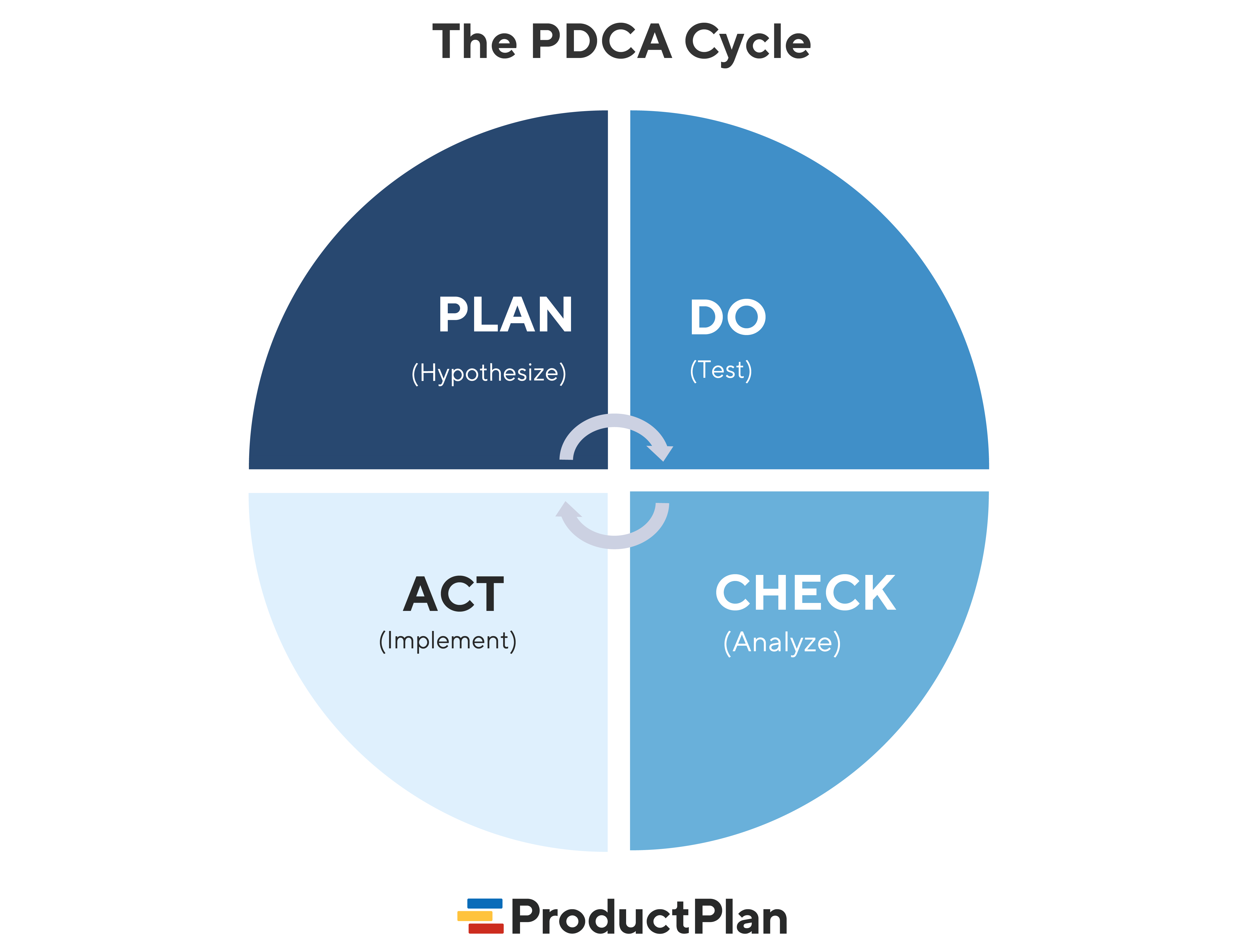What Is the PDCA Cycle?
The PDCA cycle is a project management framework that businesses can use to implement incremental change. PDCA stands for plan, do, check, and act.

This four-step approach is the most widely used methodology for implementing continuous improvement. That is why the four steps are arranged in a circle. Businesses that take this approach aim to continually repeat the process—always identifying new opportunities to use the cycle to improve.
How Is the PDCA Cycle Different from Other Change Management Strategies?
What distinguishes PDCA is that this framework is designed to help teams make small, incremental changes and test each step’s success or failure before moving onto another one.
Over time, these incremental changes can lead to a large-scale transformation in its operations or products. But using PDCA lets the team achieve this transformation carefully and move forward only with evidence the process is working.
What Does Using the PDCA Cycle Look Like?
Any department in a business can use the PDCA cycle for any incremental change. This could include changes to a company’s business process, its product, or even the company’s team culture.
One example is the A/B split tests that marketing teams run on their creative campaigns. Here is what that process might look like.
Step 1: Plan
In the “Plan” stage, a team identifies a challenge they want to overcome or an opportunity they hope to take advantage of.
Let’s say a marketing team has been running a digital advertisement for several weeks. The headline has generated many leads, and the team is happy with the results. But they’d like to learn if they can improve the ad and earn even better results. (They might also be worried that the current ad will soon start losing its effectiveness and need to be updated anyway.)
For a simple A/B test, the team changes only a single element of the campaign and runs both versions simultaneously. In this case, let’s say the team wants to try a different headline.
The planning phase: Create an alternate version of the ad’s headline.
Step 2: Do
The “Do” stage is the team’s opportunity to test their idea for change. This stage typically includes a small experiment or trial run.
In our A/B test scenario, the marketing team runs its alternate headline and for half of their online ad buys for a few days. For the other half, they keep running the original version of the ad.
The do phase: Carry out a real-world experiment to test the team’s hypothesis.
Step 3: Check
In the “Check” phase of the PDCA cycle, the business gathers and evaluates its small experiment results. If it proves successful, the company will implement the change on a wider scale. If not, the company can return to the Plan stage and come up with a different plan.
Let’s assume that after a few days, the marketing team analyzes the results of both versions of their online ad. In terms of leads generated, the new headline outperformed the original by almost 50%. The plan worked.
The check phase: Analyze the data to determine if your experiment was successful.
Step 4: Act
In the “Act” phase, the final step in the PDCA cycle, a business takes action according to the insights it gained after analyzing its experiment. If the small change worked well, the company could implement that change more broadly. If it fell short, the company might need to return to the beginning—the Plan phase—to try something else.
Because the marketing team’s alternate headline outperformed the original, the team will now want to use the newer headline for all of its ad buys going forward.
The act phase: Use your learnings from the check phase to take action—either implementing your change on a wider basis or returning to step one to devise another plan.
Related Terms
continuous improvement, change management, Kanban board, business transformation, agile
